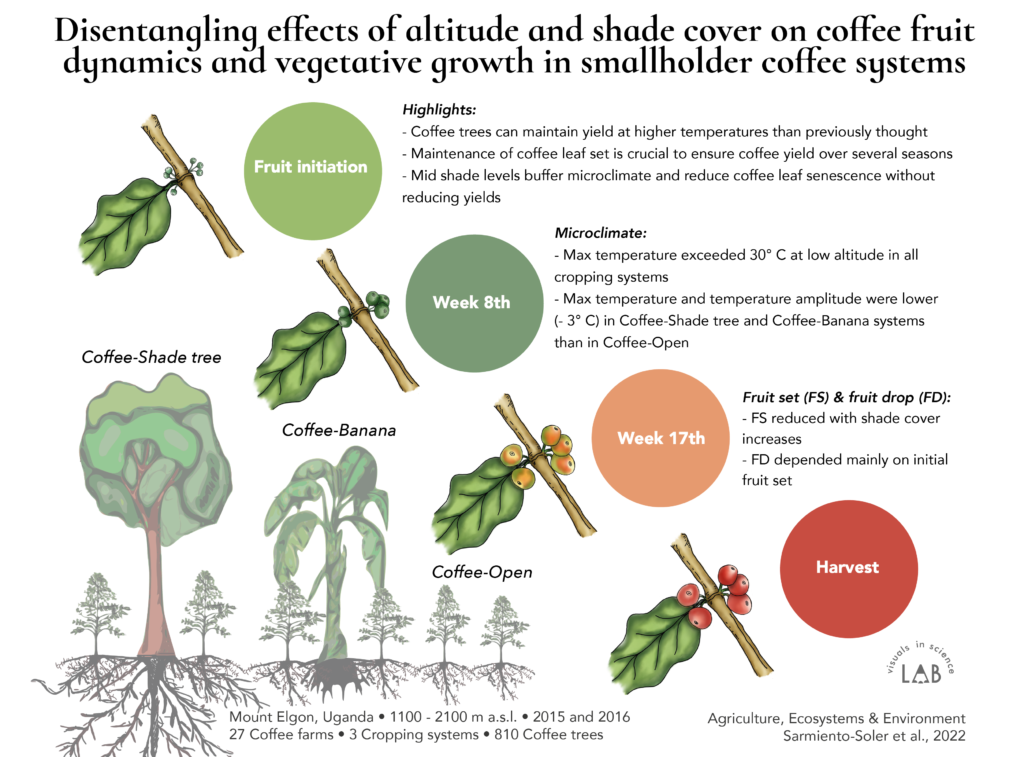
Increases in temperature and more erratic rainfall patterns due to climate change threaten the already fragile livelihood of smallholder coffee farmers. Shaded coffee in agroforestry systems appear to be a good alternative to protect coffee from extreme temperatures while providing additional ecosystem services, such as extra food and soil protection. However, excessive shade might reduce coffee yields. This study analyzed the effect of shade cover (shade type represented by cropping system (Coffee-Open (CO), Coffee-Banana (CB), Coffee-shade tree (CT))), and shade intensity (represented by leaf area index of the shade cover) along an altitude gradient on: (i) microclimate, (ii) soil water content and (iii) coffee reproductive and vegetative growth. Data was collected during two coffee fruit development cycles (2015 and 2016) in smallholder coffee farms (n = 27) on the west slopes of Mt. Elgon Uganda. Shade cover buffered coffee trees from microclimate extremes (maximum temper- ature (- 3 ◦C) and temperature amplitude – 3 ◦C). Fruit set decreased with shade cover increases. Leaf set was shown to be the most important variable for vegetative and reproductive growth along several production cycles, and fruit drop was determined mainly by fruit set. Intermediated shade cover (LAI ~ 1 m2 m− 2), as occurred in coffee intercropped with bananas, showed an optimal balance between microclimate regulations, fruit set, and fruit drop, and provided staple food and an extra source of income.
Find complete article here